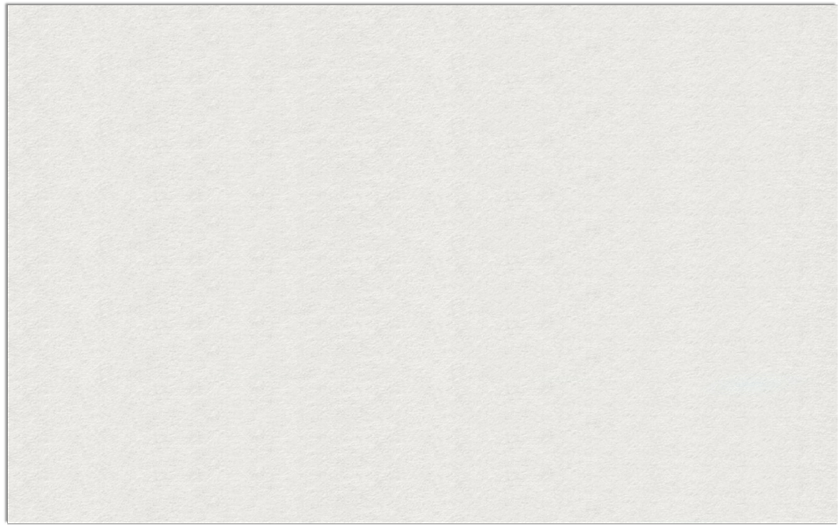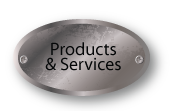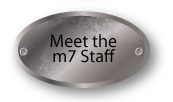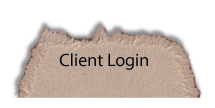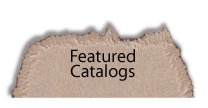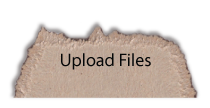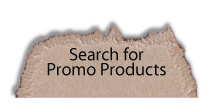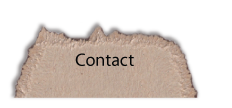--A--
Acetate
A transparent sheet placed over originals or artwork, allowing the designer to write instructions and\or indicate a second color for placement.
Against the Grain
At right angles to the grain direction of the paper being used, as compared to with the grain. Also called across the grain and cross grain. (See also Grain Direction.)
Aqueous Coating
Coating in a water base and applied like ink by a printing press to protect and enhance the printing underneath. Aqueous coating is also used to speed the printing process, as it dries and cures ink much faster.
Artwork
All original copy, including type, photos and illustrations, intended for printing. Also called art.
--B--
Bindery
Usually a department within a printing company responsible for collating, folding and trimming various printing projects.
Bitmap
A bitmap (or raster) image is one of the two major graphic types (the other being vector). Bitmap-based images are comprised of pixels in a grid. Each pixel or "bit" in the image contains information about the color to be displayed. Bitmap images have a fixed resolution and cannot be resized without losing image quality. Common bitmap-based formats are JPEG, GIF, TIFF, PNG, PICT, and BMP. Most bitmap images can be converted to other bitmap-based formats very easily. Bitmap images tend to have much large file sizes than vector graphics and they are often compressed to reduce their size. Although many graphics formats are bitmap-based, bitmap (BMP) is also a graphic format. (see also Rasterized)
Blanket
Rubber-coated pad, mounted on a cylinder of an offset press, that receives the inked image from the plate and transfers it to the surface to be printed.
Bleed
Printing that extends beyond the edge of a sheet or page before trimming. Once trimmed, the image will touch the edge of the sheet or page without any white space.
Blind Image
Image debossed, embossed or stamped, but not printed with ink or foil.
Blocking
Sticking together of printed sheets causing damage when the surfaces are separated.
Blow-Up
An enlargement, usually used with graphic images or photographs
Blueline
Prepress photographic proof made from stripped negatives where all colors show as blue images on white paper. Because 'blueline' is a generic term for proofs made from a variety of materials having identical purposes and similar appearances, it may also be called a blackprint, blue, blueprint, brownline, brownprint, diazo, dyeline, ozalid, position proof, silverprint, Dylux and VanDyke.
Bond & Carbon
Business form with carbon paper interlaced between the plys of paper.
Bond Paper
Category of paper commonly used for writing, printing and photocopying. Also called business paper, communication paper, correspondence paper and writing paper.
Bounce
A repeating registration problem in the printing stage of production.
Bristol Paper
General term referring to paper 6 points or thicker with basis weight between 90# and 200# (200-500 gsm). Used for products such as index cards, file folders and displays.
Broken Carton
Carton of paper from which some of the sheets have been removed.
Bulk
Thickness of paper relative to its basic weight.
Bulk pack
Boxing printed product without wrapping or banding.
--C--
C1S and C2S
Abbreviations for coated one side and coated two sides. Two of the most commonly used papers in digital and 4-color process printing.
Caliper
(1) Thickness of paper or other substrate expressed in thousandths of an inch (mils or points), pages per inch (ppi), thousandths of a millimeter (microns) or pages per centimeter (ppc). (2) Device on a sheetfed press that detects double sheets or on a binding machine that detects missing signatures or inserts.
Camera-ready Copy
Mechanicals, photographs and art fully prepared for reproduction according to the technical requirements of the printing process being used. Also called finished art and reproduction copy.
Carbonless Paper
Paper coated with chemicals that enable transfer of images from one sheet to another with pressure from writing or typing. An alternative to bond & carbon.
CMYK
Abbreviation for cyan, magenta, yellow and key (black), the four process colors. The "K" in CMYK stands for key because in four-color printing, cyan, magenta, and yellow printing plates are carefully keyed, or aligned, with the key of the black key plate.
Coated Paper
Paper with a coating of clay and other substances that improves reflectivity and ink holdout. Mills produce coated paper in the four major categories cast, gloss, dull and matte.
Collate
To organize printed matter in a specific order as requested.
Color Control Bar
Strip of small blocks of color on a proof or press sheet to help evaluate features such as density and dot gain. Also called color bar, color guide and standard offset color bar.
Color Correct
To adjust the relationship among the process colors to achieve desirable colors.
Color Separation
(1) Technique of using a camera, scanner or computer to divide continuous-tone color images into four halftone negatives. (2) The product resulting from color separating and subsequent four-color process printing. Also called separation.
Color Shift
Change in image color resulting from changes in register, ink densities or dot gain during four-color process printing.
Comb Bind
To bind by inserting the teeth of a flexible plastic comb through holes punched along the edge of a stack of paper. Also called plastic bind and GBC bind (a brand name).
Commercial Printer
Printer producing a wide range of products such as announcements, brochures, posters, booklets, stationery, business forms, books and magazines. Also called job printer because each job is different.
Composite Art
Mechanical on which copy for reproduction in all colors appears on only one surface, not separated onto overlays. Composite art has a tissue overlay with instructions that indicate color breaks.
Composition
(1) In typography, the assembly of typographic elements, such as words and paragraphs, into pages ready for printing. (2) In graphic design, the arrangement of type, graphics and other elements on the page.
Concertina Fold
a method of folding in which each fold opens in the opposite direction to its neighbour, giving a concertina or pleated effect.
Copyright
The right of copyright gives protection to the originator of material to prevent use without express permission or acknowledgement of the originator.
Coverage
Extent to which ink covers the surface of a substrate. Ink coverage is usually expressed as light, medium or heavy.
Cover Paper
Category of thick paper used for products such as posters, menus, folders and covers of paperback books.
Creep
Phenomenon of middle pages of a folded signature extending slightly beyond outside pages. Also called feathering, outpush, push out and thrust. See also Shingling.
Crop Marks
Lines near the edges of an image indicating portions to be reproduced. Also called cut marks and tic marks.
Customer Service Representative
Employee of a printer, service bureau, separator or other business who coordinates projects and keeps customers informed. Abbreviated CSR.
Cutting Die
Usually a custom ordered item to trim specific and unusual sized printing projects.
CWT
Abbreviation for hundredweight using the Roman numeral C=100.
Cyan
One of the four process colors. Also known as process blue.
--D--
Deboss
To press an image into paper so it lies below the surface. Also called tool.
Deckle Edge
Edge of paper left ragged as it comes from the papermaking machine instead of being cleanly cut. Also called feather edge.
Density
(1) Regarding ink, the relative thickness of a layer of printed ink. (2) Regarding color, the relative ability of a color to absorb light reflected from it or block light passing through it. (3) Regarding paper, the relative tightness or looseness of fibers.
Die
Device for cutting, scoring, stamping, embossing and debossing.
Die Cut
To cut irregular shapes in paper or paperboard using a die.
Dot Gain
Phenomenon of halftone dots printing larger on paper than they are on films or plates, reducing detail and lowering contrast. Also called dot growth, dot spread and press gain.
Dot Size
Relative size of halftone dots as compared to dots of the screen ruling being used. There is no unit of measurement to express dot size. Dots are too large, too small or correct only in comparison to what the viewer finds attractive.
Dots-per-inch
Measure of resolution of input devices such as scanners, display devices such as monitors, and output devices such as laser printers, imagesetters and monitors. Abbreviated DPI. Also called dot pitch.
Double Burn
To expose film or a plate twice to different negatives and thus create a composite image.
DPI
Considered as "dots per square inch," a measure of output resolution in relationship to printers, imagesetters and monitors.
Drill
In the printing arena, to drill a whole in a printed matter.
Dull Finish
Flat (not glossy) finish on coated paper; slightly smoother than matte. Also called suede finish, velour finish and velvet finish.
Duotone
Black-and-white photograph reproduced using two halftone negatives, each shot to emphasize different tonal values in the original.
Duplex Paper
Thick paper made by pasting highlights together two thinner sheets, usually of different colors. Also called double-faced paper and two-tone paper.
--E--
Emboss
To press an image into paper so it lies above the surface. Also called cameo and tool.
Engraving
Printing method using a plate, also called a die, with an image cut into its surface.
EPS
Encapsulated Post Script, a known file format usually used to transfer post script information from one program to another.
Equivalent Paper
Paper that is not the brand specified, but looks, prints and may cost the same. . Also called comparable stock.
Estimate
Price that states what a job will probably cost. Also called bid, quotation and tender.
Etch
To use chemicals to carve an image into metal, glass or film.
--F--
Face
1) The printed side, or the front side of a printed sheet. 2) Edge of a bound publication opposite the spine. Also called foredge. 3) An abbreviation for typeface referring to a family of a general style.
FIM
The Facing Identification Mark, or FIM, is a bar code designed by the United States Postal Service to assist in the automated processing of mail. The FIM is a set of vertical bars printed on the envelope or postcard near the upper edge, just to the left of the postage area (the area where the postage stamp or its equivalent is placed). The FIM is intended for use primarily on preprinted envelopes and postcards and is applied by the company printing the envelopes or postcards, not by the USPS.
Fine Papers
Papers made specifically for writing or commercial printing, as compared to coarse papers and industrial papers. Also called cultural papers and graphic papers.
Finish
(1) Surface characteristics of paper. (2) General term for trimming, folding, binding and all other post press operations.
Finished Size
Size of product after production is completed, as compared to flat size. Also called trimmed size.
Flexography
Method of printing on a web press using rubber or plastic plates with raised images. Also called aniline printing because flexographic inks originally used aniline dyes. Abbreviated flexo.
Flood (Coat)
To print a sheet completely with an ink or varnish. flooding with ink is also called painting the sheet.
Flyleaf
Leaf, at the front and back of a casebound book that is the one side of the end paper not glued to the case.
Foil Emboss
To foil stamp and emboss an image. Also called heat stamp.
Folder
A bindery machine dedicated to folding printed materials.
Form Bond
Lightweight bond, easy to perforate, made for business forms. Also called register bond.
Form Roller(s)
Roller(s) that come in contact with the printing plate, bringing it ink or water.
Fountain
Trough or container, on a printing press, that holds fluids such as ink, varnish or water. Also called duct.
Four-color Process Printing
Technique of printing that uses black, magenta, cyan and yellow to simulate full-color images. Also called color process printing, full color printing and process printing.
French Fold
Two folds at right angles to each other.
--G--
Gang
Getting the most out of a printing press by using the maximum sheet size to print multiple images or jobs on the same sheet. A way to save money.
Gate Fold
A sheet that folds where both sides fold toward the gutter in overlapping layers.
Ghosting
(1) Phenomenon of a faint image appearing on a printed sheet where it was not intended to appear. Chemical ghosting refers to the transfer of the faint image from the front of one sheet to the back of another sheet. Mechanical ghosting refers to the faint image appearing as a repeat of an image on the same side of the sheet. (2) Phenomenon of printed image appearing too light because of ink starvation.
Grade
General term used to distinguish between or among printing papers, but whose specific meaning depends on context. Grade can refer to the category, class, rating, finish or brand of paper.
Graduated Screen Tint
Screen tint that changes densities gradually and smoothly, not in distinct steps. Also called degrade, gradient, ramped screen and vignette.
Grain Direction
Predominant direction in which fibers in paper become aligned during manufacturing. Also called machine direction.
Grain Long Paper
Paper whose fibers run parallel to the long dimension of the sheet. Also called long grain paper and narrow web paper. Laser forms, or printed materials intended to run through a laser printer, must run grain-long, to prevent curling because of the heat.
Grain Short Paper
Paper whose fibers run parallel to the short dimension of the sheet. Also called short grain paper and wide web paper.
Graphic Design
Arrangement of type and visual elements along with specifications for paper, ink colors and printing processes that, when combined, convey a visual message.
Gripper Edge
Edge of a sheet held by grippers on a sheetfed press, thus going first through the press. Also called feeding edge and leading edge.
Gutter
In the book arena, the inside margins toward the back or the binding edges.
--H--
Hairline (Rule)
Subjective term referring to very small space, thin line or close register. The meaning depends on who is using the term and in what circumstances.
Halftone
(1) To photograph or scan a continuous tone image to convert the image into halftone dots. (2) A photograph or continuous-tone illustration that has been halftoned and appears on film, paper, printing plate or the final printed product.
Halftone Screen
Piece of film or glass containing a grid of lines that breaks light into dots. Also called contact screen and screen.
Head(er)
At the top of a page, the margin.
Hickey
Spot or imperfection in printing, most visible in areas of heavy ink coverage, caused by dirt on the plate or blanket. Also called bulls eye and fish eye.
Hot Spot
Printing defect caused when a piece of dirt or an air bubble caused incomplete draw-down during contact platemaking, leaving an area of weak ink coverage or visible dot gain.
--I--
Imagesetter
Laser output device using photosensitive paper or film.
Impression
(1) Referring to an ink color, one impression equals one press sheet passing once through a printing unit. (2) Referring to speed of a press, one impression equals one press sheet passing once through the press.
Imprint
To print new copy on a previously printed sheet, such as imprinting an employee's name on business cards. Also called surprint.
Indicia
Postal information place on a printed product.
Ink Jet Printing
Method of printing by spraying droplets of ink through computer-controlled nozzles. Also called jet printing.
Intelligent Barcode
The Intelligent Mail Barcode (IM barcode) is a 65-bar code for use on mail in the United States. The term "Intelligent Mail" refers to services offered by the United States Postal Service for domestic mail delivery. The IM barcode is intended to provide greater information and functionality than its predecessors POSTNET and PLANET. The Postal Service required use of the Intelligent Mail barcode to qualify for automation prices beginning January 28, 2013. Some of the benefits include improved deliverability, new services and increased overall efficiency.
Inserts
Within a publication, an additional item positioned into the publication loose (not bound in).
--J--
Job Number
A number assigned to a specific printing project in a printing company for use in tracking and historical record keeping.
Job Ticket
Form used by service bureaus, separators and printers to specify production schedule of a job and the materials it needs. Also called docket, production order and work order.
Jogger
A vibration machine with a slopping platform to even-up stacks of printed materials.
--K--
K
Abbreviation for key (black) in four-color process printing. Hence the 'K' in CMYK.
Kiss Die Cut
To die cut the top layer, but not the backing layer, of self-adhesive paper. Also called face cut.
Kraft Paper
Strong paper used for wrapping and to make grocery bags and large envelopes.
--L--
Laid Finish
Finish on bond or text paper on which grids of parallel lines simulate the surface of handmade paper. Laid lines are close together and run against the grain; chain lines are farther apart and run with the grain.
Laminate
A thin transparent plastic sheet (coating) applied to usually a thick stock (covers, post cards, etc.) providing protection against liquid and heavy use, and usually accents existing color, providing a glossy (or lens) effect.
Landscape
Artist style in which width is greater than height. (Portrait is opposite.)
Laser Bond
Bond paper made especially smooth and dry to run well through laser printers.
Layout
A sample of the original providing (showing) position of printed work (direction, instructions) needed and desired.
Leading
Amount of space between lines of type.
Ledger Paper
Strong, smooth bond paper used for keeping business records. Also called record paper.
Letter fold
Two folds creating three panels that allow a sheet of letterhead to fit a business envelope. Also called barrel fold and wrap around fold.
Letterpress
Method of printing from raised surfaces, either metal type or plates whose surfaces have been etched away from image areas. Also called block printing.
Linen Finish
Embossed finish on text paper that simulates the pattern of linen cloth.
Lithography
Method of printing using plates whose image areas attract ink and whose nonimage areas repel ink. Nonimage areas may be coated with water to repel the oily ink or may have a surface, such as silicon, that repels ink.
Live Area
Area on a mechanical within which images will print. Also called safe area.
Logo (Logotype)
A company, partnership or corporate creation (design) that denotes a unique entity. A possible combination of letters and art work to create a "sole" entity symbol of that specific unit.
Loupe
Lens built into a small stand. Used to inspect copy, film, proofs, plates and printing.
--M--
Magenta (M)
One of the four process colors.
Makeready
(1) All activities required to prepare a press or other machine to function for a specific printing or bindery job, as compared to production run. Also called setup. (2) Paper used in the makeready process at any stage in production. Makeready paper is part of waste or spoilage.
Margin
Imprinted space around the edge of the printed material.
Marginal Words
Call outs for directions on various parts of a business form. When marginal words are the only thing printed in red on a black form, a small, rubber stamp is used on the press to save money on printing plates. Otherwise, marginal words will be included in the plate.
Matte Finish
Flat (not glossy) finish on photographic paper or coated printing paper.
Metallic Ink
Ink containing powdered metal or pigments that simulate metal.
Micrometer
Instrument used to measure the thickness of different papers.
Mil 1/1000 Inch
The thickness of plastic films as printing substrates are expressed in mils.
Mock Up
A reproduction of the original printed matter and possibly containing instructions or direction.
Moire
Undesirable pattern resulting when halftones and screen tints are made with improperly aligned screens, or when a pattern in a photo, such as a plaid, interfaces with a halftone dot pattern.
M Weight
Weight of 1,000 sheets of paper in any specific size.
--N--
Negative
The image on film that makes the white areas of originals black and black areas white.
News Print
Paper used in printing newspapers. Considered low quality and "a short life use."
--O--
Offset Paper
Term for uncoated book paper.
Offset Printing
Printing technique that transfers ink from a plate to a blanket to paper instead of directly from plate to paper.
Offsetting
Using an intermediate surface used to transfer ink. Also, an unpleasant happening when the images of freshly printed sheets transfer images to each other.
Overlay
Layer of material taped to a mechanical, photo or proof. Acetate overlays are used to separate colors by having some type or art on them instead of on the mounting board. Tissue overlays are used to carry instructions about the underlying copy and to protect the base art.
Overlay Proof
Color proof consisting of polyester sheets laid on top of each other with their image in register, as compared to integral proof. Each sheet represents the image to be printed in one color. Also called celluloid proof and layered proof.
Over Run
Additional printed matter beyond order. Overage policy varies in the printing industry. Advance questions avoid blind knowledge.
--P--
Pagination
In the book arena, the numbering of pages. Different book binding processes require different pagination layouts.
Paper Plate
A printing plate made of strong and durable paper in the short run offset arena (cost effective with short runs).
Parallel Fold
Method of folding. Two parallel folds to a sheet will produce 6 panels.
Parent Sheet
Any sheet larger than 11' x 17' or A3.
Perfect Bind
To bind sheets that have been ground at the spine and are held to the cover by glue. Also called adhesive bind, cut-back bind, glue bind, paper bind, patent bind, perfecting bind, soft bind and soft cover. See also Burst Perfect Bind.
Perfecting Press
Press capable of printing both sides of the paper during a single pass. Also called duplex press and perfector.
Perf Marks
On a "dummy" marking where the perforation is to occur.
Perforating
Taking place on a press or a binder machine, creating a line of small dotted wholes for the purpose of tearing-off a part of a printed matter (usually straight lines, vertical or horizontal).
Pinholing
Small holes (unwanted) in printed areas because of a variety of reasons.
Pixel
Short for picture element, a dot made by a computer, scanner or other digital device.
Plate
Piece of paper, metal, plastic or rubber carrying an image to be reproduced using a printing press.
PMS
Obsolete reference to Pantone Matching System. The correct trade name of the colors in the Pantone Matching System is Pantone colors, not PMS Colors.
Portrait
An art design in which the height is greater than the width. (Opposite of Landscape.)
PostScript
The computer language most recognized by printing devices. PS and EPS (encapsulated postscript) files are both types of postscript files.
Prepress
Camera work, color separations, stripping, platemaking and other prepress functions performed by the printer, separator or a service bureau prior to printing. Also called preparation.
Press Check
Event at which makeready sheets from the press are examined before authorizing full production to begin.
Press Number
A method of numbering manufacturing business forms or tickets.
Press Time
Amount of time that one printing job spends on press, including time required for makeready.
Price Break
Quantity at which unit cost of paper or printing drops.
Printing
Any process that transfers to paper or another substrate an image from an original such as a film negative or positive, electronic memory, stencil, die or plate.
Printing Plate
Surface carrying an image to be printed. Quick printing uses paper or plastic plates; letterpress, engraving and commercial lithography use metal plates; flexography uses rubber or soft plastic plates. Gravure printing uses a cylinder. The screen printing is also called a plate.
Process Color (Inks)
The colors used for four-color process printing: yellow, magenta, cyan and black.
Proof
Test sheet made to reveal errors or flaws, predict results on press and record how a printing job is intended to appear when finished.
--Q--
Quotation
Price offered by a printer to produce a specific job.
--R--
Rag Paper
Stationery or other forms of stock having a strong percentage content of "cotton rags."
Raster Graphics
A raster graphics image is a dot matrix data structure representing a generally rectangular grid of pixels, or points of color, viewable via a monitor, paper, or other display medium. Raster images are stored in image files with varying formats. (see also Bitmap)
Rasterize
The process of converting a vector image into a bitmap image.
Ream
500 sheets of paper.
Recycled Paper
New paper made entirely or in part from old paper.
Register
To place printing properly with regard to the edges of paper and other printing on the same sheet. Such printing is said to be in register.
Register Marks
Cross-hair lines on mechanicals and film that help keep flats, plates, and printing in register. Also called crossmarks and position marks.
Resolution
Sharpness of an image on film, paper, computer screen, disc, tape or other medium.
RGB
An additive color model in which red, green, and blue light are added together in various ways to reproduce a broad array of colors. The main purpose of the RGB color model is for the sensing, representation, and display of images in electronic systems, such as televisions and computers. RGB is a device-dependent color model: different devices detect or reproduce a given RGB value differently, since the color elements (such as phosphors or dyes) and their response to the individual R, G, and B levels vary from manufacturer to manufacturer, or even in the same device over time. Thus an RGB value does not define the same color across devices without some kind of color management. Typical RGB input devices are color TV and video cameras, image scanners, video games, and digital cameras. Typical RGB output devices are TV sets of various technologies (CRT, LCD, plasma, etc.), computer and mobile phone displays, video projectors, multicolor LED displays, and large screens such as JumboTron. Color printers, on the other hand, are not RGB devices, but subtractive color devices (typically CMYK color model).
Rich Black
Is an ink mixture of solid black over one or more of the other CMYK colors, resulting in a darker tone than black ink alone generates in a printing process. A typical rich black mixture might be 100% black, 50% of each of the other three inks. While, in theory, an even richer black can be made by using 100% of each of the four inks, in practice, the amount of non-black ink added is limited by the wetness that the paper and printing process can handle. (A safe and practical rule of thumb is that ink coverage should not exceed 240% on normal papers.
Right Reading
Copy that reads correctly in the language in which it is written. Also describes a photo whose orientation looks like the original scene, as compared to a flopped image.
Rip Film
A method of making printing negatives from PostScript files created by desktop publishing.
Rotary Press
Printing press which passes the substrate between two rotating cylinders when making an impression.
Rule
Line used as a graphic element to separate or organize copy.
--S--
Saddle Stitch
To bind by stapling sheets together where they fold at the spine, as compared to side stitch. Also called pamphlet stitch, saddle wire and stitch bind.
Satin Finish
Alternate term for dull finish on coated paper.
Scale
To identify the percent by which photographs or art should be enlarged or reduced to achieve, the correct size for printing.
Scanner
Electronic device used to scan an image.
Score
To compress paper along a straight line so it folds more easily and accurately. Also called crease.
Screen Angles
Angles at which screens intersect with the horizontal line of the press sheet. The common screen angles for separations are black 45 degree, magenta 75 degree, yellow 90 degree and cyan 105 degree.
Screen Density
Refers to the percentage of ink coverage that a screen tint allows to print. Also called screen percentage.
Screen Printing
Method of printing by using a squeegee to force ink through an assembly of mesh fabric and a stencil.
Self Cover
Usually in the book arena, a publication not having a cover stock. A publication only using text stock throughout.
Self Mailer
A printed item independent of an envelope. A printed item capable of travel in the mailing arena independently.
Separated Art
Art with elements that print in the base color on one surface and elements that print in other colors on other surfaces. Also called preseparated art.
Separations
Usually in the four-color process arena, separate film holding qimages of one specific color per piece of film. Black, Cyan, Magenta and Yellow. Can also separate specific PMS colors through film.
Sheetfed Press
Press that prints sheets of paper, as compared to a web press.
Shingling
Allowance, made during paste-up or stripping, to compensate for creep. Creep is the problem; shingling is the solution. Also called stair stepping and progressive margins.
Show-through
Printing on one side of a sheet that can be seen on the other side of the sheet.
Side Stitch
To bind by stapling through sheets along, one edge, as compared to saddle stitch. Also called cleat stitch and side wire.
Signature
Printed sheet folded at least once, possibly many times, to become part of a book, magazine or other publication.
Slip Sheets
Separate sheets (stock) independent from the original run positioned between the "printed run" for a variety of reasons.
Soy-based Inks
Inks using vegetable oils instead of petroleum products as pigment vehicles, thus are easier on the environment.
Specifications
Complete and precise written description of features of a printing job such as type size and leading, paper grade and quantity, printing or binding method. Abbreviated specs.
Spine
The binding edge of a book or publication.
Spiral Bind
To bind using a spiral of continuous wire or plastic looped through holes. Also called coil bind.
Spoilage
Paper that, due to mistakes or accidents, must be thrown away instead of delivered printed to the customer, as compared to waste.
Spot Color or Varnish
One ink or varnish applied to portions of a sheet, as compared to flood or painted sheet.
Step and Repeat
Prepress technique of exposing an image in a precise, multiple pattern to create a flat or plate. Images are said to be stepped across the film or plate.
Stocked Paper
Popular sizes, weights and colors of papers available for prompt delivery from a merchant's warehouse.
Strip
To assemble images on film for platemaking. Stripping involves correcting flaws in film, assembling pieces of film into flats and ensuring that film and flats register correctly. Also called film assembly and image assembly.
Substrate
Any surface or material on which printing is done.
--T--
Tabloid
Using a broadsheet as a measure, one half of a broadsheet.
Tag
Grade of dense, strong paper used for products such as badges and file folders.
Template
Concerning a printing project's basic details in regard to its dimensions. A standard layout.
Text Paper
Designation for printing papers with textured surfaces such as laid or linen. Some mills also use 'text' to refer to any paper they consider top-of-the-line, whether or not its surface has a texture.
Thermography
Method of printing using colorless resin powder that takes on the color of underlying ink. Also called raised printing.
Total Area Coverage
Total of the dot percentages of the process colors in the final film. Abbreviated for TAC. Also called density of tone, maximum density, shadow saturation, total dot density and total ink coverage.
Transfer Tape
A peel and stick tape used in business forms.
Trap
To print one ink over another or to print a coating, such as varnish, over an ink. The first liquid traps the second liquid. See also Dry Traps and Wet Traps.
Trim Size
The size of the printed material in its finished stage (e.g., the finished trim size is 5 1\2 x 8 1\2).
--U--
Uncoated Paper
Paper that has not been coated with clay. Also called offset paper.
Up
Term to indicate multiple copies of one image printed in one impression on a single sheet. "Two up" or "three up" means printing the identical piece twice or three times on each sheet.
UV Coating
Liquid applied to a printed sheet, then bonded and cured with ultraviolet light. Causes ink to dry quickly, prevents offsetting, and creates a glossy surface.
--V--
Varnish
Liquid applied as a coating for protection and appearance.
Vector Graphics
The use of geometrical primitives such as points, lines, curves, and shapes or polygons—all of which are based on mathematical expressions—to represent images in computer graphics.[1][not in citation given] Vector graphics are based on vectors (also called paths), which lead through locations called control points or nodes. Each of these points has a definite position on the x and y axes of the work plane and determines the direction of the path; further, each path may be assigned a stroke color, shape, thickness, and fill.[2][not in citation given] These properties don't increase the size of vector graphics files in a substantial manner, as all information resides in the document's structure, which describes solely how the vector should be drawn.
Vellum Finish
Somewhat rough, toothy finish.
--W--
Wash Up
To clean ink and fountain solutions from rollers, fountains, screens, and other press components.
Watermark
Translucent logo in paper created during manufacturing by slight embossing from a dandy roll while paper is still approximately 90 percent water.
Web Press
Press that prints from rolls of paper, usually cutting it into sheets after printing. Also called reel-fed press. Web presses come in many sizes, common sizes have 17", 22" and 24" cylinders.
Wire-O Binding
A method of wire binding books along the binding edge that will allow the book to lay flat using double loops.
With the Grain
Parallel to the grain direction of the paper being used, as compared to against the grain. See also Grain Direction.
Work and Tumble
Printing one side of a sheet and turning it over from the gripper to the tail to print the second side using the same side guide and plate for the second side.
Work and Turn
Printing one side of a sheet and turning it over from left to right ussing the same side guides and plate for the second side.
Wove
Paper manufactured without visible wire marks, usually a fine textured paper.
Wrong Reading
An image that is backwards when compared to the original. Also called flopped and reverse reading.
--X--
--Y--
--Z--



